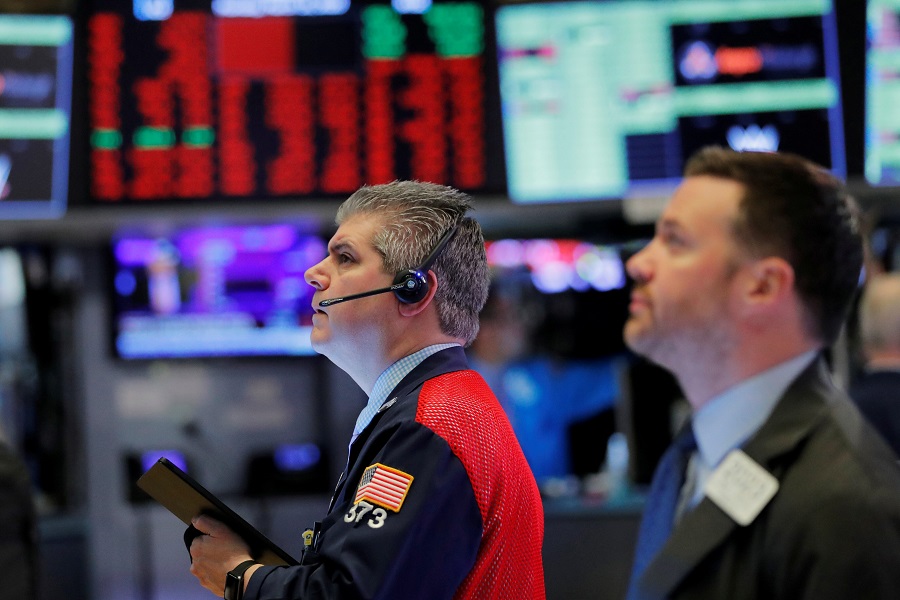Why Fed independence doesn’t matter to financial markets
The financial markets are not especially concerned by the threats to the Fed’s independence.

Fed independence doesn’t matter so much to financial markets
The Federal Reserve cut its benchmark interest rate by 25 basis points and announced it will end quantitative tightening (QT) on December 1st. These outcomes probably won’t move the market too much. You can also be sure that President Trump will criticize Fed Chair Powell whatever the outcome. But, here too, the markets seem largely unfazed by the political pressure being put on the Fed. That may well continue unless, that is, the data starts to suggest that the Fed is wrong.
There has been a lot made of the political pressure being put on the Fed. And it is not just the myriad of Truth Social posts by Trump criticizing Chair Powell. Trump has appointed former Council of Economic Advisors Chair Stephen Miran to the Board and, in January, will make the case to the Supreme Court for the sacking of current Fed Board member Lisa Cook. These appear to be very real moves to exert political influence over the Fed above and beyond the critical social media posts.
As a result, it seems hard to argue that the market is unfussed about the pressure on Fed independence because Trump is all words and no action. So why so calm? Steven Barrow, Head of Standard Bank G10 Strategy, thinks there are a number of reasons.
One is that the market might not particularly trust the Fed anyway. The Bank has been missing the inflation target since early 2021. That’s four and a half years. And even now, with PCE inflation closer to 3% than the 2% target, the bank is still cutting rates. Steven Barrow argues that if the Fed were really determined to bring inflation back to target, it would not be cutting rates right now, and perhaps particularly in light of the risks to inflation from tariffs. In short, it looks as if the Fed has rather taken its eye off the inflation ball anyway, even before the Administration can exert any real political pressure.
Another point is that many central banks that claim to be independent are at least cognisant of what the government expects of them. If we look at Japan, for instance, there were significant moves to ease policy back in the spring of 2013 all because the PM at the time, Abe, appointed somebody as BoJ head that would essentially carry out the government’s wishes to create significant monetary easing. In other words, central banks don’t deliberately go out to act in defiance of the government.
A third factor to bear in mind is that financial markets are not especially concerned by these threats to Fed independence because the bank is cutting interest rates—and that’s generally helpful for the bond and stock markets. It might be different if the Fed were refusing to cut or, worse still, was lifting rates, but that’s clearly not the case. The market is hardly likely to protest if the Fed is delivering the things it wants.
Putting all this together, it looks as if President Trump can continue to put pressure on the Fed in terms of both words and actions and not fear a market freak-out. But in Steven Barrow’s view this is only likely to be the case if the data plays ball. In other words, this independence debate won’t matter to the market until it does matter. If the labor market bucks up and/or inflation starts to rise materially, tension between the White House and the Fed may escalate, and if it does not, because the Fed has been sufficiently politicized, the tension will be between the Fed and Trump Administration on one side and the financial markets on the other, specifically the bond market. But what are the chances of this happening?
On the labor market side, we need to remember that the unemployment rate is still only a tenth above the level FOMC members regard as full employment. In addition, there’s fiscal easing to come next year and, no doubt, further crackdowns on migration that will reduce the pool of available labor. While, on prices, we do still expect tariff pressure to come through. Now we are not, for one second, suggesting that there will be a repeat of the 2021/22 inflation surge; just that inflation will be persistently and materially above target, or enough to push 10-year treasury yields up to 5% over the next year, or so.








